5 Charitable Planning Options That Can Save You Money on Taxes
Due to recent changes in the tax law, charitable planning is becoming an intricate part of tax, estate and gift planning. It's important to plan now while opportunities still exist.


Since the 2017 Tax Cuts and Jobs Act, now more than ever there is a greater incentive for donors to contemplate whether charitable planning will provide an immediate or future benefit. Donors who will benefit from this range from business owners, executives, doctors, accountants, attorneys, professional athletes and even retirees due to the new deduction limits on state and local taxes (SALT), the elimination of several other deductions, as well as the increased standard deduction.
Here are five charitable planning options that can save you money on taxes in 2019 and beyond:
1. Donor-Advised Fund (DAF)
A donor-advised fund is a separately managed charitable investment account that is operated by a section 501(c)(3) organization, also known as a sponsor or sponsoring organization. You can contribute cash, appreciated securities, real estate and other property to receive an immediate tax deduction. Those assets grow tax-free, and in turn you can make recommendations to any charity, although the sponsoring organization makes the final decision (learn more by reading Choosing Between a Private Foundation vs. Donor-Advised Fund).

Sign up for Kiplinger’s Free E-Newsletters
Profit and prosper with the best of expert advice on investing, taxes, retirement, personal finance and more - straight to your e-mail.
Profit and prosper with the best of expert advice - straight to your e-mail.
The main advantage of a donor-advised fund is an upfront tax deduction. The disadvantages are loss of control with contributions, investment fees charged, and the sponsoring organization having the final choice on the charity that receives the funds.
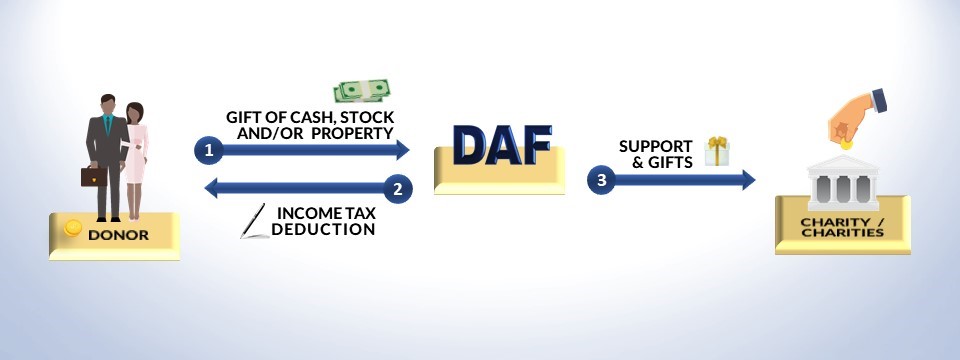
2. Charitable Lead Trust (CLT)
A charitable lead trust is a type of irrevocable trust that provides income payments to a charity for a period of time — typically through a fixed term of years — with the remainder either going to the donor or donor’s family members. Gifts can be cash, appreciated securities, real estate and other types of property. Depending on the type of charitable lead trust — grantor or non-grantor — the purpose for establishing either can be for estate or gift tax reduction, as well as an income tax deduction.
A grantor charitable lead trust makes payments to a charity for a fixed period of years, with the remainder going back to the donor (also known as the “grantor”). With this structure, the donor, or grantor, would receive an upfront income tax deduction for the present value of the charitable donation. However, the donor would not receive any additional tax deductions for future distributions made to a charity or charities through the rest of the term.
A non-grantor charitable lead trust makes payments to a charity for a fixed period of years, with the remainder going to family members or other persons who are not the donor. With this structure, the donor can substantially — or potentially entirely — avoid paying estate or gift taxes.
The advantages to the donor are either an upfront tax deduction or estate or gift tax reduction. In addition, the charity will also instantly benefit the most from this arrangement because of the immediate payments that will be made. The disadvantage is that once assets are transferred to the trust, they cannot be removed.
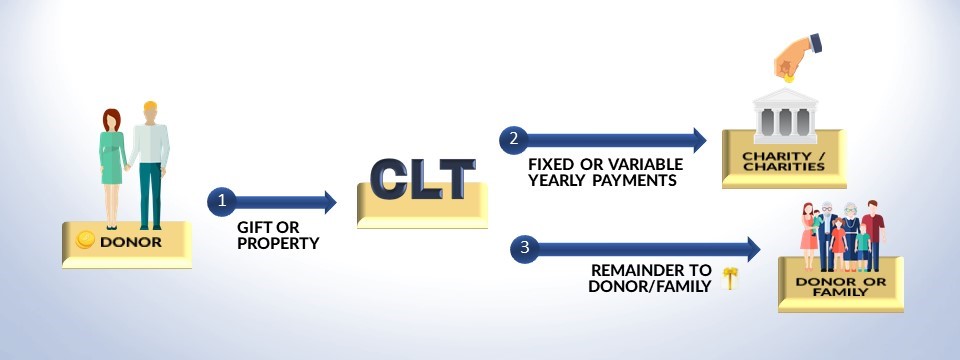
3. Charitable Remainder Trust (CRT)
A charitable remainder trust is another type of irrevocable trust, and the complete opposite of a charitable lead trust. Assets are transferred to the charitable remainder trust, which gives an immediate tax deduction, in addition to income for a period of time or the rest of your life. Gifts can be cash, appreciated securities, real estate and other types of property.
The income stream can be paid to you, a spouse, and any leftover will go to a beneficiary if you were to pass away prematurely and didn’t receive the predetermined income payments. At death, the remainder goes to the charity of your choice.
The advantages to the donor are the upfront tax deduction as well as the income payments made. Keep in mind that with this structure a charity will only benefit from this arrangement after you pass away. As with a charitable lead trust, the disadvantage is that once assets are transferred to the trust, they cannot be removed.
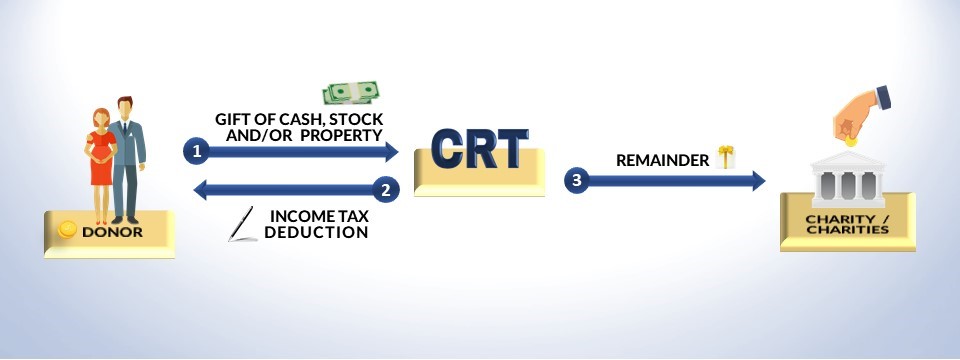
4. Charitable Gift Annuity (CGA)
A charitable gift annuity is an irrevocable contract between a donor and a charity that provides an upfront tax deduction as well as a lifetime stream of income payments. Gifts can be cash, appreciated securities, real estate and other types of property (learn more by reading Gift Annuity Offers Tax Break and Retirement Income).
Many nonprofits and large universities offer charitable gift annuities. The advantages to the donor are the upfront tax deduction as well as the income payments. Similar to a charitable remainder trust, the charity (or multiple charities) will only benefit from this arrangement after you pass away. The disadvantages are that once assets are transferred to the trust, they cannot be removed and payments will cease if the charity goes insolvent.
As you can see, the charitable remainder trust and charitable gift annuity are very similar. The differences lie in their structure. Charitable gift annuities — like all annuities — are contracts and pay you (and your spouse if structured correctly) fixed payments for the rest of your lives, not adjusted for inflation. Payments are backed by the charity’s assets and are more regulated than a charitable remainder trust. With a charitable remainder trust, you can choose from either fixed or variable payments with both the tax deduction and payout potentially greater versus the charitable gift annuity. Also, the charitable remainder trust has more flexibility in case you want to contribute appreciated assets.
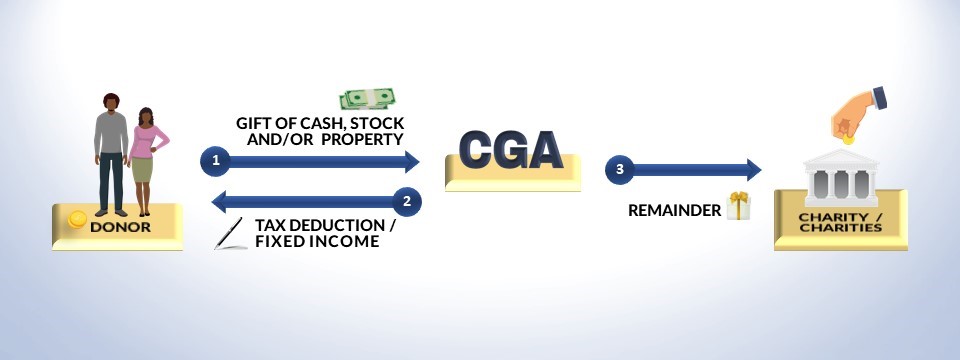
5. Qualified Charitable Distribution (QCD)
A qualified charitable distribution is for those age 70½ or more who don’t want (or need) the required minimum distribution (RMD) from their IRA. Although a QCD doesn’t provide an upfront tax deduction or lifetime income like a charitable gift annuity or trust would, it’s an overlooked tax loophole because retirees can exclude up to $100,000 per year from their RMDs without having to claim it on their tax return. The QCD is made directly from your IRA to a charity without having to be claimed as income. If you’re married, your spouse can also exclude up to $100,000 per year as well.
The advantage to the donor is the exclusion of up to $100,000 per year from their tax return (each spouse), which can help reduce Social Security taxation as well as Medicare premiums due to the lower adjusted gross income (AGI). The disadvantage is once the RMD is transferred to a charity, it is irrevocable and cannot be undone.
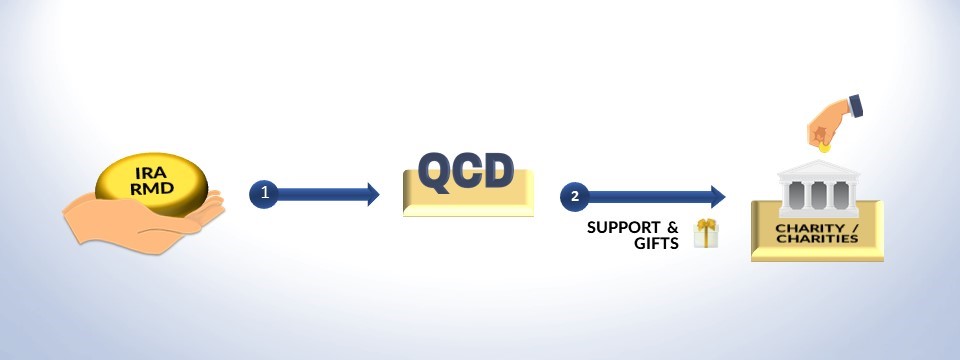
While it’s vital to have this conversation with a well-versed tax or financial professional, donors should explore certain charitable vehicles (or a combination) to maximize their tax deductions now while supporting a favorite charity at the same time. Otherwise, these opportunities may cease or substantially change in the next few years.
Get Kiplinger Today newsletter — free
Profit and prosper with the best of Kiplinger's advice on investing, taxes, retirement, personal finance and much more. Delivered daily. Enter your email in the box and click Sign Me Up.

Carlos Dias Jr. is a financial adviser, public speaker and president of Dias Wealth, LLC, headquartered in the Orlando, Fla., area, but working with clients nationwide. His expertise spans a diverse clientele, including business owners, retirees, lottery winners and professional athletes with wealth management, tax planning, estate planning, long-term care, annuities and life insurance. Carlos has contributed to Kiplinger, Forbes and MarketWatch, and his work has been featured in CNN, CNBC, The Wall Street Journal, U.S. News & World Report, USA Today and other publications. He’s spoken at various CPA societies across the United States, and Carlos’ presentations often focus on innovative tax strategies, retirement planning and asset protection, providing valuable knowledge to accountants, attorneys and financial professionals.
-
 Customer Services are Strained at the SSA, You Should Plan Around These Federal Holidays
Customer Services are Strained at the SSA, You Should Plan Around These Federal HolidaysIf you have a question or need information from a federal agency, check the federal holiday schedule to make sure you get your business done before they close.
By Donna LeValley
-
 Stock Market Today: No 'Powell Put'? No Problem
Stock Market Today: No 'Powell Put'? No ProblemInvestors, traders and speculators look beyond both another Trump post and more signs of slowing economic activity.
By David Dittman
-
 First 100 Days: Trump's Impact on Your Finances
First 100 Days: Trump's Impact on Your FinancesHere are some opportunities to consider regarding investing, interest rates and tax cuts as the financial landscape shifts under the new administration.
By Daniel Razvi, Esquire
-
 What Would Happen if You Put Your Tax Refund in an IRA?
What Would Happen if You Put Your Tax Refund in an IRA?Not only could you get a tax break, but the compounding effect over 35 years could turn the average refund into nearly $14,000.
By Romi Savova
-
 Children Can't Afford to Fly the Nest? Here's How to Help
Children Can't Afford to Fly the Nest? Here's How to HelpThe high cost of living means more adult children are staying at home. Here are four ways to help financially so they can eventually spread their wings.
By Kelli Kiemle, AIF®
-
 Which Generation Pays the Most Tax in the US?
Which Generation Pays the Most Tax in the US?Tax Burden Polls show that most people feel like taxes are unfair. But which age group bears the brunt of the tax burden in the United States?
By Kelley R. Taylor
-
 Here’s How the Trump Harvard IRS Tax Threat Could Impact You
Here’s How the Trump Harvard IRS Tax Threat Could Impact YouTax Law Trump's latest higher education showdown raises fundamental questions that could reach beyond nonprofit tax status.
By Kelley R. Taylor
-
 A QLAC Does So Much More Than Simply Defer Taxes
A QLAC Does So Much More Than Simply Defer TaxesHere are the multiple ways you can use a QLAC, from managing retirement risks to creating income for specific retirement needs and wants.
By Jerry Golden, Investment Adviser Representative
-
 Self-Directed Brokerage Accounts: Retirement's Hidden Gem?
Self-Directed Brokerage Accounts: Retirement's Hidden Gem?SDBAs are often overlooked, but they can offer more flexibility and growth potential inside your 401(k) when actively managed by a professional.
By Scott M. Dougan, RFC, Investment Adviser
-
 Early-Stage Startup Deals: How Does a SAFE Work?
Early-Stage Startup Deals: How Does a SAFE Work?Investing in an early-stage startup can get complicated fast, so the venture capital industry turns to other investing options. One is a SAFE.
By Murat Abdrakhmanov